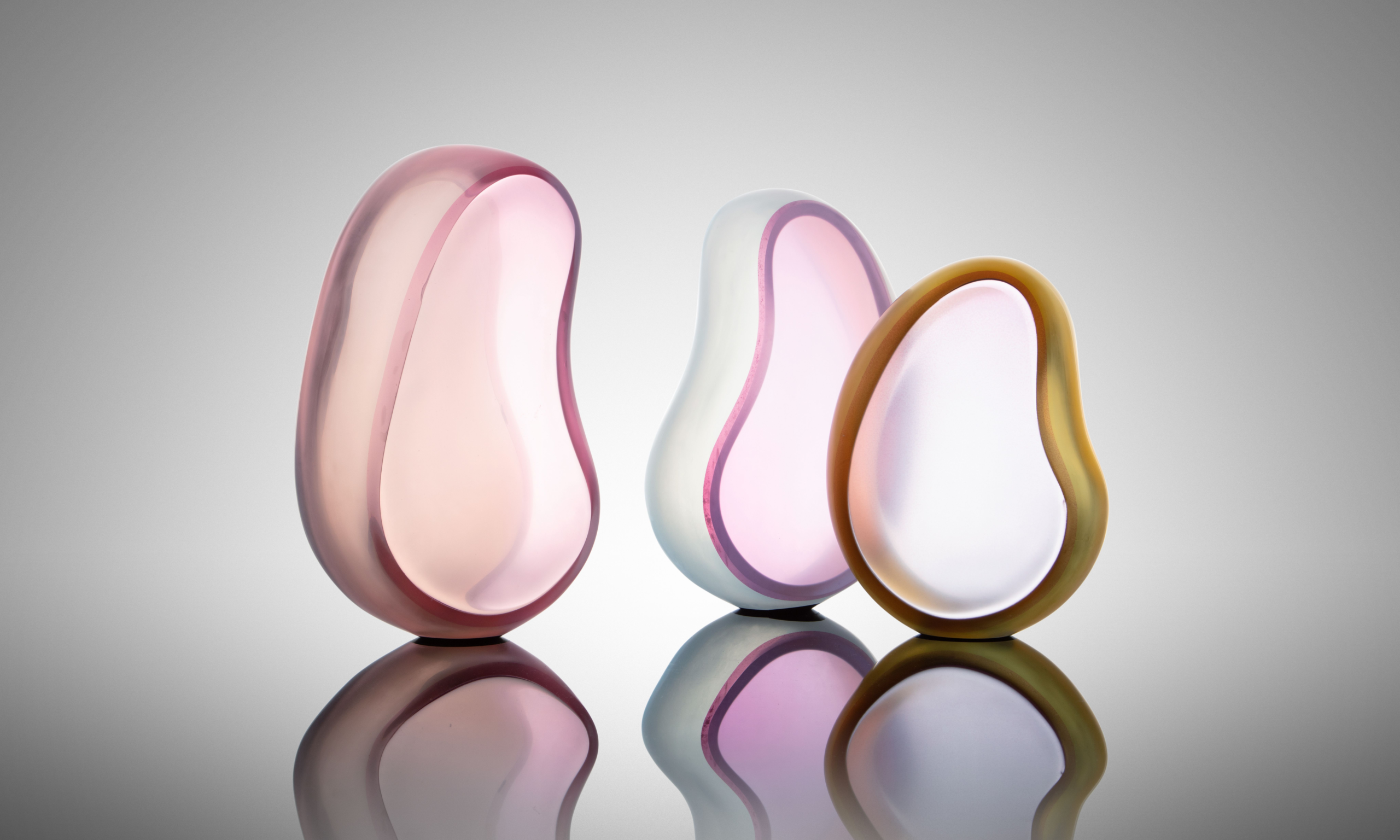Jonas Noël Niedermann, group of Modular Shapes Courtesy the artist and Chesterfield Gallery
Contemporary glass art is a relatively new addition to the fine art market, with its history spanning less than 60 years according to the Corning Museum of Glass, the world's largest space dedicated to contemporary glass art. This niche genre continues to gain popularity, thanks in part to a young generation of buyers. Museums, galleries and auction houses alike have taken notice and are mindful to incorporate more works by contemporary glass artists in their offerings than ever before.
This summer Sotheby’s is partnering with New York-based Chesterfield Gallery, which specialises in contemporary glass art, for a selling exhibition titled, simply, The Hamptons (until 25 July). The pop-up at Sotheby's East Hampton space showcases works by glass artists such as Swiss glass master Jonas Noël Niedermann and innovative American sculptor Joshua Bernbaum, alongside works by blue-chip artists like Roy Lichtenstein and Lee Krasner.
“Including contemporary glass pieces gives Sotheby’s the opportunity to open the door to those who may find collecting intimidating,” says Eliza Ravelle-Chapuis, head of Sotheby’s East Hampton gallery. “While some visitors may come to view the current exhibition of higher price-point blue chip works, as they would at a museum, the glass objects allow them to explore participating in the sale at a manageable price point.”
The collaboration between Sotheby’s and Chesterfield Gallery came about in an effort to provide more visibility and diversity of selection to Sotheby’s clients. Although the theme of curated glass pieces differs from that of the main exhibition, Simon Abrahms, a long-time collector and the founder of Chesterfield Gallery, worked closely with Sotheby’s to settle on a cohesive vision that would cater to their clientele in the Hamptons.
“We landed on a selection of works that one might find in an enchanted forest, botanical, amorphous, shimmering. And with that in mind, we chose these pieces,” Abrahms says. Ranging from delicate to bold, the small works resonate with a glistening sense of tranquility that one may find in a magical space. The objects are colourful yet iridescent. Kiva Ford and Juniper Nielsen’s collection in particular displays miniature foliage within elegant glass domes that speak directly to a woodland fantasy.
In addition to advocates like Abrahms, crossover work in fashion and installation for contemporary glass artists is also increasing the visibility of the material. For example, sought-after artist Jean-Michel Othoniel created blown glass installations for the Chanel flagship store in New York City this spring. As Ravelle-Chapuis says, “having that kind of cross-category [collaboration] between art and design helps to pull different types of buyers into the market.”
Abrahms agrees that this is an opportunity for not only market growth, but artistic awareness as well. One key factor he points to is that glass is now more widely categorised as “sculpture and design” as opposed to being considered a craft. As a result there are more glass artists working in the contemporary fine art space than ever before. “This increase in output contributes to there being more top-quality works to share with museums and collectors,” Abrahms says. “That has had a positive impact on the market value as well.”
Contemporary glass art listings range anywhere from the lower four figures into the millions of dollars. But with many museum-quality works still undervalued, investing in contemporary glass objects is an experiment with promising potential. Both Ravelle-Chapuis and Abrahms say that purchasing glass art is often a successful gateway into the world of collecting. And with the emergence of a secondary market, contemporary glass art may become a category with the potential to expand the value of any personal collection.

